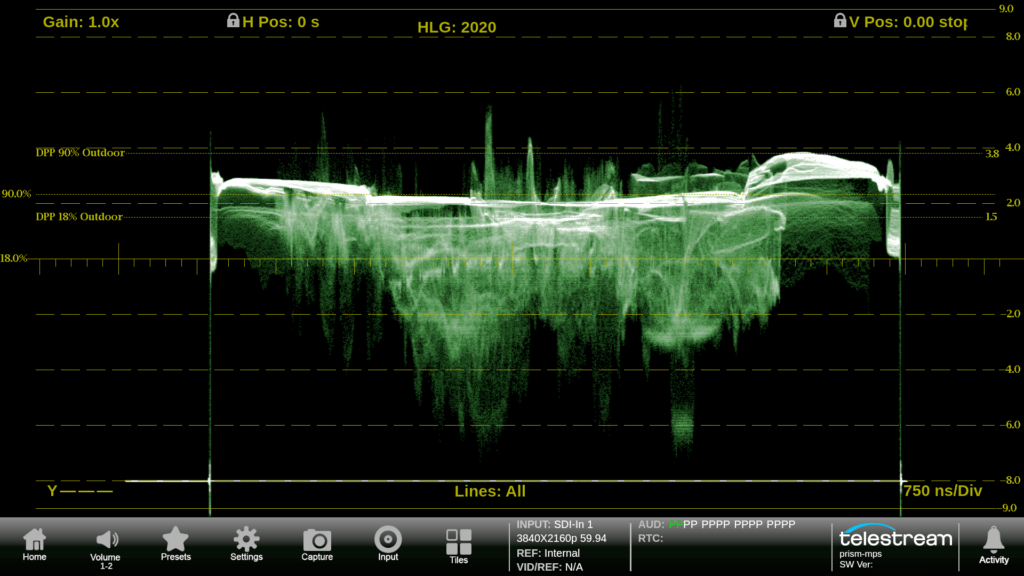In today’s fast-paced content creation industry, the demand for high-quality content is skyrocketing. Production and post-production houses are constantly under pressure to meet tight deadlines while maintaining quality requirements. With content distributors increasingly requesting video production houses to deliver programs in High Dynamic Range (HDR) to captivate larger audiences, there’s a growing need for streamlined workflows in production.
Manual Processes Hamper HDR Production
Capturing high quality footage on set is the first step in creating compelling content, but the “fix it in post” strategy is no longer a viable option. Relying on post-production to correct issues later leads to costly rework and inflated video production costs, especially for HDR program creation.
To efficiently capture HDR footage, video production teams must pay close attention to camera and lighting setups to achieve the desired artistic intent right from the acquisition phase. For this purpose, the team uses the measurement of light in terms of “STOP” units describing the relative brightness of light (A +1 stop means the light is twice as bright, while a -1 stop indicates it is half as bright. For example, if “Object A is +3 stops brighter than Object B,” it means Object A is eight times brighter.) The unit has been widely used on set, but traditional waveform monitors used during acquisition distorts the direct reading of light intensity due to the inclusion of gamma correction. This forces camera operators and lighting engineers to manually convert these reading into stop units, increasing the potential for miscommunication.
Eliminate Errors in Video Production with STOP Display
Professional waveform monitors like the Telestream PRISM solves this issue by providing a STOP display. With this feature, operators can instantly read the light levels in the same “STOP” language that teams use on set, eliminating guesswork and reducing the risk of errors.
The STOP display is especially useful during multi-camera shoots where different cameras might have varying gamma settings. For example, a scene of an explosion, the primary camera might be a main cine camera, while secondary cameras positioned near the explosion could be specialized cameras with different lenses and gamma settings. With this type of setup, it’s crucial to balance the signals from all cameras before filming to avoid costly retakes. The STOP display enables camera operators to compare light levels across all cameras on the same scale (stop), ensuring intended exposure and lighting across the cameras without the complexities of traditional waveform monitors.

PRISM Stop Display showing the Luma waveform of a HLG camera input
Even in simpler setups, such as a single-camera shoots, the STOP display helps camera operators visualize how changes to lens exposure or lighting will affect the scene before adjusting. Additionally, as STOP display stretches out black level in its presentation, it is easier to see the detail in dark than the traditional waveform display that has black level crushed. If closing the lens by one more stop will result in hiding the object in the shadows or introduce noise, the STOP display will clearly indicate this before any adjustments are made. This allows the operator to make quick, informed decisions with confidence.

Traditional RGB waveform compared to PRISM STOP display.
The STOP display enhances the efficiency of HDR content production, enabling creators to deliver visually stunning and high-value content while staying within budget and on schedule.
PRISM Ensures Precision and Quality in Video Production
Cinematographers have traditionally used light meters to measure reflected light since the days of film cameras. With today’s electronic cine cameras offering live monitoring with gamma output, waveform monitors have become standard tools on set. Telestream’s latest PRISM monitor, with its innovative patented STOP display, empowers cinematographers and camera operators to make precise exposure and lighting decisions, and easily balance multiple cameras. This not only ensures high-quality footage but also helps prevent retakes, reducing post-production costs.
Contact us for a demonstration of the STOP display. Click to learn more about PRISM waveform monitoring.

